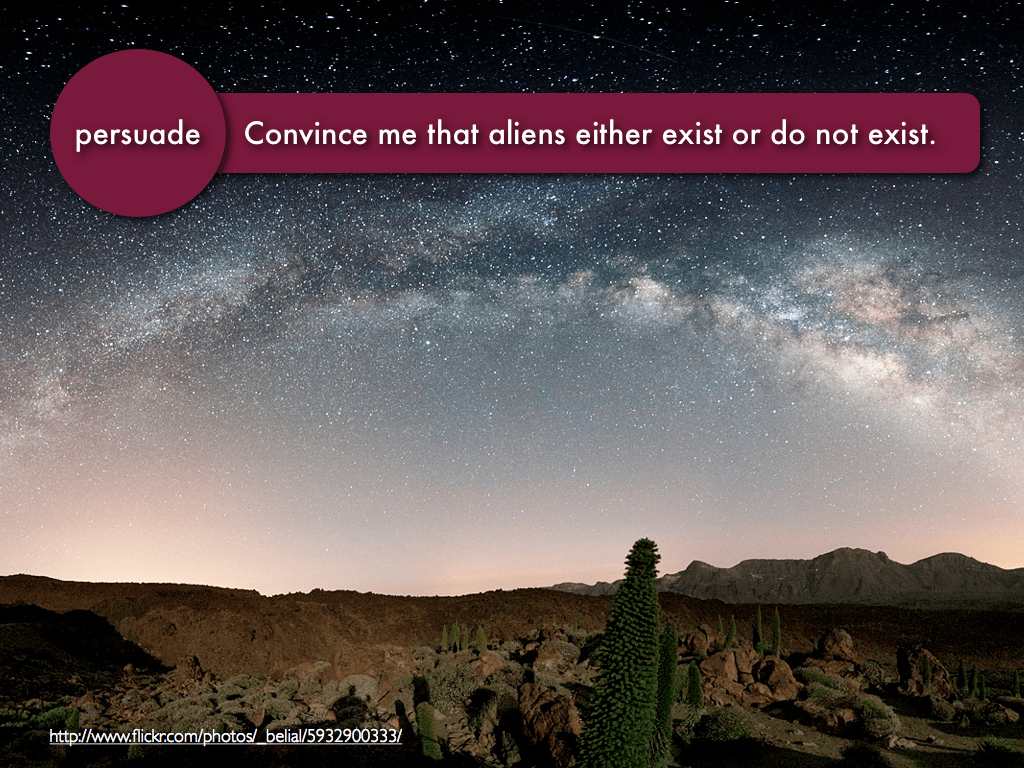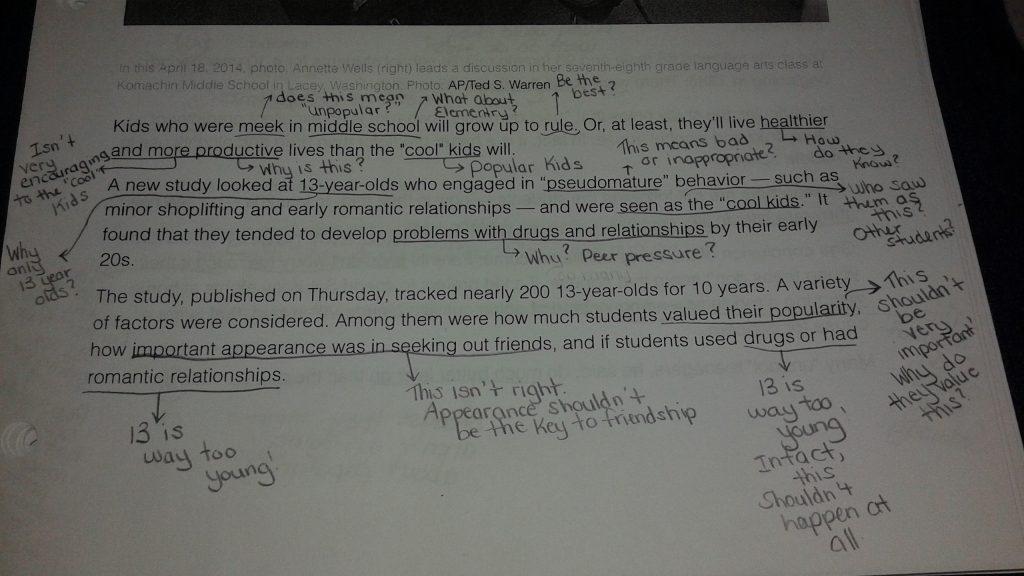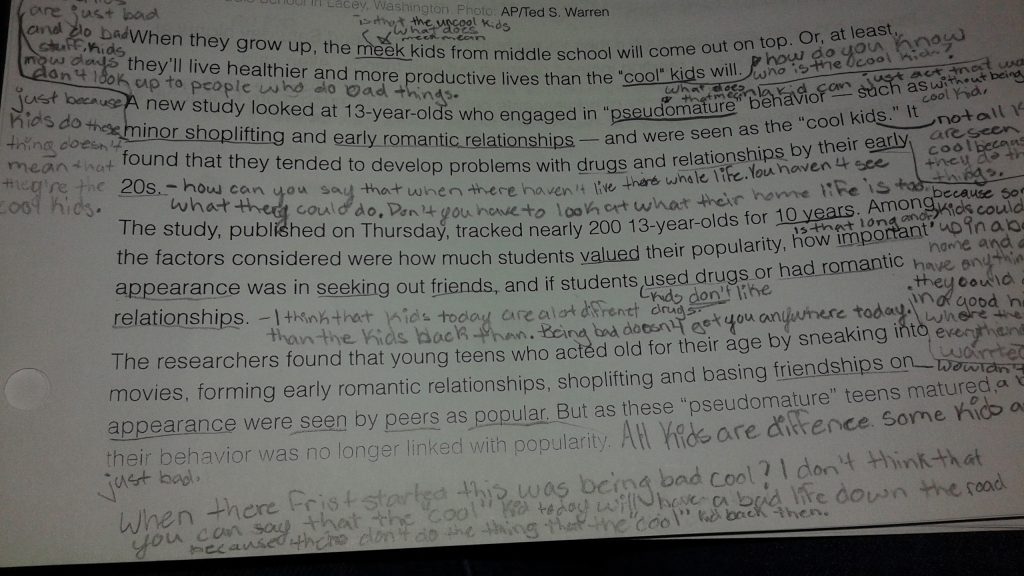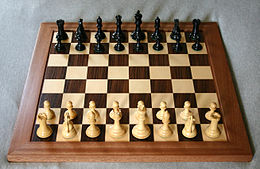The WHY:
- Responding to our reading helps us, even forces us, to think more deeply about our reading. When we have to ‘say something’ about the ideas in our books, we have to think beyond just what the text says. The reader has to infer, connect, judge, question, determine importance, or visualize.
- Responding to our reading is curriculum based. The Ontario Reading Curriculum for all grades state that students need to ‘make meaning using implied and stated ideas from the text’, to ‘analyse the elements of a narrative text’ and so on . . .
- Responses give me, the teacher, a sense of how my students ‘think through’ the concepts and ideas presented in their books. Conferences do that too, but writing your thoughts can spark more in depth thinking and a more complete organization of your thoughts, helping you to present your thought processes with greater creativity and accuracy.
- Given the amount of time we spend in class doing independent reading with self-selected texts (which I believe is so important to developing a habit of reading for pleasure and for understanding), I, the teacher, need to hold myself accountable for that time spent. I need to know that it’s truly growing ‘thinking readers.’
- Reading and assessing responses in students’ journals helps me to plan instruction based on what I learn about students’ thinking processes. I can see what they’re doing well, and what they still need to learn.

The WHAT:
- A good response to reading is much more than a summary.
- A good response contains ORIGINAL THOUGHTS in the form of inferences (reading between the lines), questions, connections (only when they help you to understand the text), judgements (about the characters, the settings, the ideas the author is presenting to his/her readers), etc.
- A good response also contains evidence to support those original thoughts. You can’t just say that a character is brave or kind without backing it up with some EVIDENCE.
- A good response contains EXPLANATIONS that connect the ORIGINAL THOUGHTS to the EVIDENCE.
- I can do sample responses till the cows come home, but the best way to show you what a good response looks like is to show you STUDENT SAMPLES. That’s because everyone thinks, “Well of course SHE can write a good response! She’s the TEACHER!”
- Below, you will have the chance to read some excellent responses from students in my classes now, this year – both 7th and 8th graders. I also want to show you WHAT is good about them, so I’m going to colour code them for you. RED will show student thinking (inferences, questions, connections, etc.). BLUE will show evidence to support the thinking. Green will show explanations that connect the thinking to the evidence.
- Before each response, I’ll write which sections of the Reading Response Journal Guide the response addresses so that you can see how these students used the ideas and questions in the guide.
Here goes!
*You will notice that each of the following responses follows the format presented in the Reading Response Journal Guide: Page numbers read; Title of the book; and the Date.
* You will also notice that summaries are kept to a minimum and used only to help the reader of the response understand the original thoughts that the student is presenting in the response.
Talk about characters: Describe one of the characters in your book by identifying one or more character traits for your character. Support your ideas with evidence from the book. Do you like this character? Why? Why not? Did the character do anything to surprise you? Why were you surprised?
p. 0-303 Flame in the Mist by Renee Ahdieh January 28, 2018
The one character that really intrigues me in this book would be the main character, Mariko.
At the beginning, she strikes me as the type of girl who was different than any other. In that day and age, a girl’s purpose was to be married off and entertain men. Through her thoughts, I had gotten the feeling that Mariko would not accept this as her future if she had had a choice.
For example, “ . . . a play Nobutada could then smugly subvert, as her elder. As a man. Try as she might, Mariko could not help the resentment simmering beneath the surface.” (p.9)
As the book moved forward, Mariko’s convoy was massacred and – being the only survivor – Mariko decided to dress as a peasant boy. At first I had questioned why she had done so, but then I thought that she knew she would be more successful in surviving and following through with her plan if she was thought to be a man.
I think the biggest qualities I admire of Mariko is her determination to find out who wanted her dead and bravery to do it alone.
Instead of going to find help, she made it her goal to track the Black Clan, a violent group of thieves by herself because she suspected it was them. As a result, she ended up being their newest recruit, although they treated her fairly poorly.
I think she wanted to prove that she was more than just a girl. I think she wanted to make her point by using her intelligence, secrecy, and bravery that she could do anything a man could.
Not only was she trying to prove it to her family, who was very well known, respected, and wealthy, but also to herself. After all, she had been on her way to being married, so that made me think that she was never really given a chance to express her opinion and thoughts to her family about how what was considered proper to every other human on the planet, was considered unfair to her. Or, perhaps she knew that not matter what she says, she would get nowhere.
I feel that she sees this as an opportunity to prove herself. To earn the respect she desires from her family if she could accomplish something that only a warrior was expected to do – track down a killer.
Mariko is a character who really makes the story interesting and anticipating. What I am waiting for is when the Black Clan finds out her real identity! If they were the ones who sabotaged her convoy, then surely if they ever find out the truth they would kill her on the spot.
By Heather (Grade 8)
Talk about the plot: Think about the types of conflict in most narratives: man vs. man, man vs. nature, man vs. self, and man vs. society. Which of these best describes the main conflict(s) in your book? Explain your answer giving examples from the story.
p. 0-144 Requiem by Lauren Oliver January 29, 2018
In my book so far, there has been a lot of conflicts. The main type is society vs. man. The invalids aren’t accepted by society because they believe in love and happiness. They are thrown into high security jails or are forced to run away. The cured think that love is a deadly disease that they need to get rid of. But the invalids think that the cured people are bad guys because their beliefs are different. They prove the invalids right because the the regulators find the invalids in the wilds, they try to kill them. They set fire to their camps and shoot them, and the invalids lose the little amount of food, shelter, and family that they have.
I don’t understand why they can’t try to live in peace. If you believe in love, you’re insane, but if you don’t, you’re cruel. That’s how they look at each other. The cureds haven’t even tried to make peace with the invalids. The cureds believe in what they believe in and they aren’t going to change to make the invalids happy.
I know that they’re never going to have peace with each other. But why not try?
Another conflict issue this book has is between the invalids and the scavengers. They have both been discarded by society. The invalids just want love and happiness. The scavengers have been shunned by society because of the same reasons the invalids are, but they’re more hardcore and vicious. If the scavengers find out that there’s a camp of invalids in the area, it becomes a full-blown blood-bath. But why not team up against society together? It won’t happen though because they’re different than each other. They also have different beliefs. The cureds think they’re the same, but the scavengers will kill whoever and whatever to get their own way. The invalids won’t do that.
And there’s also a much simpler type of conflict too – man vs. man. Alex vs. Julian. There’s a known feud between them because Alex used to love Lena and now Julian does. I think the reason why Alex doesn’t like Julian is because he thinks that Lena left him to die and chose someone else. So he doesn’t like Julain because he had Lena first. Those are just a few of the different conflicts in my book.
by Keira (Grade 8)
Talk about the theme: Why do YOU think the author wrote this book? What important ideas or issues did he/she want the reader to think about? Explain your answer by using examples from the story. What did you learn about the world from this book? Did it inform you about history, art, politics, geography, science, music or any other discipline? How did the book teach YOU an important life lesson?
p. 1-300 Refugee by Alan Gratz January 30, 2018
I think the author wrote this book to show the reader what people have gone through in the past and that we still have these problems today. I knew how terrible the wars were in the past, but this book showed me that the same thing is still happening today.
He showed me this by telling three stories; Josef a Jewish boy in 1930, Isabel, a Cuban girl in 1994, and Mahmoud, a Syrian boy in 2015. They were all different people, in different times, and in different countries, yet their stories were the same. They all had to leave their countries due to war or dictatorship, they were all struggling to survive with what little things they had left, they all travelled by boat, and they all had a goal to reach a certain country so that they could be safe and free.
I also liked the fact that the author made the stories so similar to make you realize that nothing has changed. Sometimes when I read this, I got mixed up with the stories and it makes me think about war that so many people had to go through the same thing over and over again, just so that one guy could have his perfect world.
I am so fortunate to have what I have and that I don’t have to go through all of the things they did. I think the author’s goal was to tell people that we need to change something or more people will suffer the same fate. That people have to change their view on the world and that people are more important than power.
by Nick (Grade 7)
Talk about characters: Describe one of the characters in your book by identifying one or more character traits for your character. Support your ideas with evidence from the book. Does this character remind you of yourself? Explain how you are alike.
Talk about the plot: Can you make a prediction about what will happen next in the story? Explain why your prediction makes sense.
p. 1-57 Harry Potter and the Goblet of Fire by J.K. Rowling January 30, 2018
One of my favourite characters in this book is Hermoine Granger. She is fun to read about, not only because she is described so well, but also because when I read about her, she reminds me of myself.
Hermione is one of the main characters and is best friends with Ron and Harry. She is intelligent and likes to be in charge. I’d call this trait ‘confidence’ because she knows what she is doing and does it well. For instance, whenever Harry arrives at Ron’s house, she greets him and then tells him to go get the table ready for dinner, because Mrs. Weasley needs to speak to George and Fred. When she tells someone what to do, they do not argue, because they know she’s right. In these parts where Hermione takes charge, this is when she reminds me of myself. I also like to be in charge and know what’s going on because I can relax when I know that everything’s in order.
I think that Lord Voldemort will soon regain enough strength to attempt to kill Harry. I say this because Lord Voldemort is hiding right now, one of Harry’s teachers prophetised something of great evil coming soon. “The Dark Lord will rise again with his servants great and more terrible than ever before.” (p.238 in the last book).
At first, Harry didn’t understand but there have been more clues that Lord Voldemort will come back. For example, Harry’s legendary scar hurts when evil is near and during the summer, he felt it. Harry realized that no one was near, but that something is coming.
Another clue that the Dark Lord is regaining strength is because at the world Quidditch Cup (a wizard sport), Voldemort’s sign of evil was emitted into the sky. This hasn’t happened for thirteen years because his evil followers have been hiding. But, if they’re back again, that means that he will be as well.
The last reason that I think Voldemort will soon have enough power to finish Harry off is because in the beginning of the book, there was a scene where two men killed an innocent man. The only person that would do that that I know of is the Dark Lord. That means he has some power and may soon have enough to battle Harry. This is why I predict that Voldemort will soon have enough power, and try to kill Harry.
by Kate (Grade 7)
Talk about characters: Describe one of the characters in your book by identifying one or more character traits for your character. Support your ideas with evidence from the book. Do you like this character? Why? Why not? Did the character do anything to surprise you? Why were you surprised?
Talk about the theme: Why do YOU think the author wrote this book? What important ideas or issues did he/she want the reader to think about? Explain your answer by using examples from the story. What did you learn about the world from this book? How did the book teach YOU an important life lesson?
Get Personal: Talk about any personal reactions you had during your reading of this book. What made you angry, sad, happy, afraid, etc.? What made your heart wrench? What irritated you? Explain how the book inspired these reactions.
p. 1-137 Everything, Everything by Nicola Yoon January 29, 2018
Maddy Whitier doesn’t leave her house, and never has for seventeen years. With SCID (Sever, Combined, Immunodeficiency Disease), she’s allergic to everything. Even the smallest thing, like the one ingredient in the soap used to wash the dishes could be deadly.
She has only ever had contact with two people in her life; her mom, and her nurse, Carla. She has a great bond with both mom and her nurse, Carla. She has a great bond with both of them, with all the time that she has on her hands.
A couple days later, a strange truck parks in the driveway of the house next door. A girl, a father, and a mother jump out of it. Then, him. Tall, lean, and wearing all black – it was love at first sight. When they start texting each other online, the more she wants to come face to face with him, the more she wants to experience the outside world.
This book consumed me from the very beginning. I loved how instead of the first few pages being an introduction of herself, she talked about all the books she has read. It made me very interested, and I asked myself, “How did she have the time to read all these books?”
Another thing that made me fall in love with the book is her relationship with her mother. It’s such a warm and sweet relationship. For Maddy’s birthday, just the two of them spent it together, cuddling and watching their favourite movie, baking cakes, and playing board games. But lately, the more she is texting him, the more she wants to go outside and meet him. It’s making her act more rebellious toward her mom and it’s impacting their relationship. One day, Maddy meets with the boy next door – messing everything up. Her mom finds out and bans her from seeing him. Of course, Maddy ignores this and keeps texting him.
Even though I’m not that far into the book, I think I see a really good theme. Sometimes you need to take risks for the people you love because it’s worth the pain. Maddy keeps risking herself for him, as she thinks he is worth it. Doing this already put some ‘pain’ between Maddy and her mother. And if Maddy goes outside again, something could seriously go wrong. But you know it’s true love when you would put yourself at risk for someone.
So far, I love this book. The words Maddy uses to think are so detailed and uniquely phrased, making reading this book even more enjoyable. I really can’t wait to read more of this book!
by Brooklin (Grade 8)
Talk about characters: Describe one of the characters in your book by identifying one or more character traits for your character. Support your ideas with evidence from the book. Do you like this character? Why? Why not? Did the character do anything to surprise you? Why were you surprised?
Talk about the plot: Think about the types of conflict in most narratives: man vs. man, man vs. nature, man vs. self, and man vs. society. Which of these best describes the main conflict(s) in your book? Explain your answer giving examples from the story.
Talk about the setting: If the setting of your book is particularly important to the story, explain why the story depends on this setting.
Talk about the theme: Why do YOU think the author wrote this book? What important ideas or issues did he/she want the reader to think about? Explain your answer by using examples from the story. What did you learn about the world from this book? Did it inform you about history, art, politics, geography, science, music or any other discipline? How did the book teach YOU an important life lesson?
Talk about the genre: If this was your first time reading this genre, would you say you are inspired to read other books in this genre? Why? Why not?
Get Personal: Talk about any personal reactions you had during your reading of this book. What made you angry, sad, happy, afraid, etc.? What made your heart wrench? What irritated you? Explain how the book inspired these reactions.
p. 1-450 Hunger by Michael Grant January 29, 2018
The concept of surviving a whole new unknown world without adults or anybody over the age of fifty is what has been drawing me into this complex story of survival and adventure. It’s a unique plot, but I always wonder what brought the author to write such an eye-opening story. One idea that keeps re-entering my mind is this catastrophic and life-changing event or circumstances show the true qualities that lurk beneath someone’s typical demeanour or attitude that they use everyday.
In the story, what they call the FAYZ (Fallout Alley Youth Zone) has had a major affect on the children of the city, Perido Beach. They become leaders and stand up to the challenge, or they are haunted by fear and the disappearance of their parents very often. Losing the people close to you is very, very hard, but some people become hopeful, and that hope empowers them to work hard to find a way out, or a happy ending; people like Sam.
Sam has done nothing but support the people that need his help, and fight for what is right. He is solving problems that no one knows the answers to, but most of all, he has become the leader that will get them out of this mess. People like Quinn are the opposite. He became scared and distant, although I can’t judge him for that because that’s probably what I would have done. He lost his goofy, happy-g0-lucky personality, and he can’t get over his missing parents.
I cannot forgive Quinn for switching sides whenever it is convenient for him. When things are not looking good for Sam, he joins Caine, but when Caine is struggling, he crawls right back to Sam. That is unforgivable, disloyal, and not only that, cowardly.
The FAYZ also shows me the good and evil that are in a person. I think everybody has a little bit of good and evil in them, and in a crisis such as the FAYZ, one overpowers the other. Take Drake Merwin a an example. Before the FAYZ, he was a troubled kid. He dreamt of hurting other humans and animals. Now, as the FAYZ lasts longer, he gets worse. He has taken lives, and finds it entertaining. Some would call him a sociopath, someone without a conscience or remorse. He took the FAYZ as a chance to free his true self that was always restrained by the adults of the previous society.
I think this book has changed me, not only as a reader, but as a person. As a reader, I have gained a new respect for sci-fi/fantasy novels. It has tempted me to try other novels of this genre. As a person, I have learned to never take for granted the privilege that I am very lucky to have now. When reading this book, privileges such as my supportive family, my education, and a nice hot pizza will never go unnoticed.
by Olivia (Grade 8)
The HOW:
- Use sticky notes to jot down thoughts during the reading of the book so that you don’t forget what you’re thinking, wondering, realizing, etc. Use those sticky notes as a ‘jump start’ to your response. Find evidence for the thoughts you jotted down. Explain why those thoughts arose.
- Use sticky notes or the reading journal to record passages (parts of the text and the page number) that made you think. This will be your evidence when you write your response.

- Use the Reading Response Journal Guide that is stapled into the journal itself. The questions are there to spark your thinking, just as it did for the students who wrote the responses above.
- If you are struggling with response journal work, please feel free to attend extra-help sessions.
 I really loved this book on audio. It is a multiple point of view perspective. The story is told from the point of view of both protagonists: Lena and Campbell.
I really loved this book on audio. It is a multiple point of view perspective. The story is told from the point of view of both protagonists: Lena and Campbell. Emani is a 17 year old mom who loves her baby girl, Emma, and her abeula (grandmother) and her cooking. She had her baby at a very young age, so she’s had to learn responsibility and control and how to manage her time and her heart.
Emani is a 17 year old mom who loves her baby girl, Emma, and her abeula (grandmother) and her cooking. She had her baby at a very young age, so she’s had to learn responsibility and control and how to manage her time and her heart.



















































